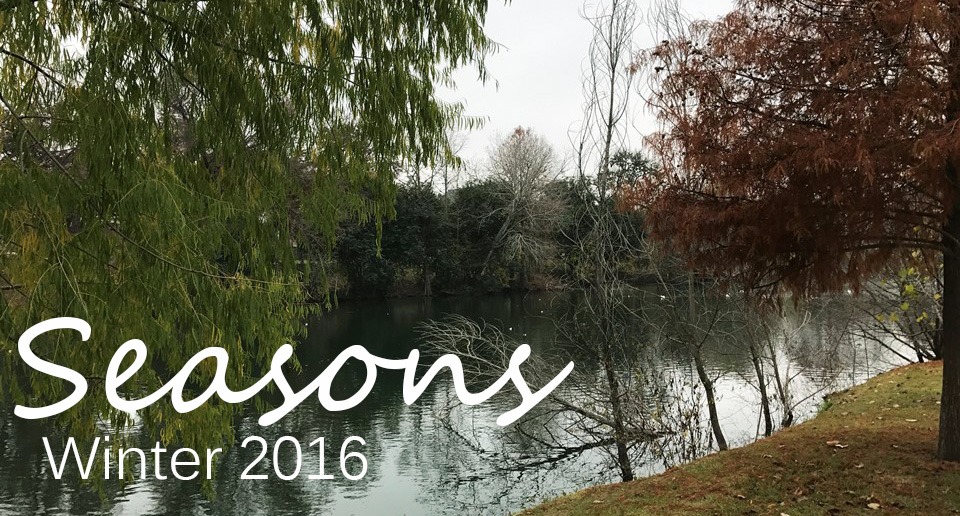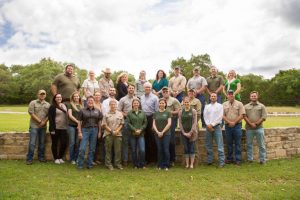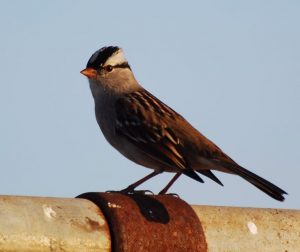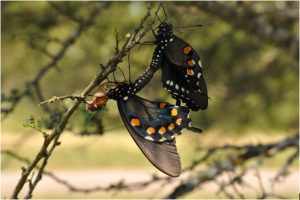Seasons – Winter 2016

From the Plateau Land & Wildlife Management Team,
Happy Winter Solstice! While we can’t believe 2016 is about to wrap up, we’re certainly in the holiday spirit. There is plenty of joy and celebration to be had, and we’re happy to celebrate another great year; one of Plateau’s best, thanks to landowners like yourselves who continuously strive to be the best stewards of your land and trust Plateau in the process.
We hope you all are able to look back at the last year with fondness and excitement for what lies ahead.
As you settle down by the fire and reflect on the closing of another year, be sure to add Plateau to your list of things you did right this year – because an investment in the enjoyment of your land and the heritage, and legacy of land ownership is something that will be around for many more years to come.
Happy Holidays from our family to yours
 Until next season and Seasons,
Until next season and Seasons,
The Plateau Team
Table of Contents
Sparrows: Not just your little brown bird
New Plateau Office
Introducing Clay Whitfill
Becoming a Texas Master Naturalist
Winter Wildlife Management Activities Checklist
Plateau Winter Seminars & Webinars
Service Spotlight: Service Spotlight
Testamentary Trust
Plateau Land Group Featured Listing
Sparrows: Not just your little brown bird
By Kyndal Anderson, Staff Biologist
 After two winters of only making it to the wait list, I was finally able to secure a seat in the popular Sparrows of Central Texas class that is hosted every November-December by the Travis Audubon Society and taught by the esteemed Dr. Byron Stone, more fondly known as “Sparrowman.” This course is set up as a two-part system with class time and field time working hand-in-hand to help students better identify the twenty regularly occurring sparrow species in central Texas during the winter months. Sparrows are the quintessential “little brown birds” that we see gathering to feed in grasslands or feeders, scattering up into woodland edges and zipping by only to mysteriously become lost in vegetation.
After two winters of only making it to the wait list, I was finally able to secure a seat in the popular Sparrows of Central Texas class that is hosted every November-December by the Travis Audubon Society and taught by the esteemed Dr. Byron Stone, more fondly known as “Sparrowman.” This course is set up as a two-part system with class time and field time working hand-in-hand to help students better identify the twenty regularly occurring sparrow species in central Texas during the winter months. Sparrows are the quintessential “little brown birds” that we see gathering to feed in grasslands or feeders, scattering up into woodland edges and zipping by only to mysteriously become lost in vegetation.
I must admit, sparrows have always been a bit frustrating for me to try to track down in the field. They are quick, small, have several species that look very similar to each other, and have a knack for burying themselves in grass or brush, which can make it difficult to see the bird clearly or entirely. Dr. Stone has a saying which goes something like this: “sparrow identification is cerebral,” meaning that the best place to start in the identification process is by looking at the face and getting clear field markings to match to a species. As I mentioned above, there are twenty regularly occurring sparrow species that winter here in central Texas, five of which I will cover in this article as common species that you may recognize from your own property or backyard.
- Chipping Sparrow: As a member of the Spizella genus, the Chipping Sparrow is a small, clean-breasted bird that tends to be found in groups of the same species or with Field Sparrows mixed in. Adults are easily identified by their solid, rusty crown, white “eyebrow,” and black eye-line that seems to pass through the eye itself rather than breaking at any point for an eye-ring. These birds are commonly found in open woodlands with a grassy understory or suburban areas like parks.
- Lark Sparrow: Lark Sparrows are a common species that often times form flocks and are found in open, grassy areas, along roadsides, or near plowed fields. Their harlequin facial pattern is almost unmistakable, with a rufous crown and cheek, dark eye-line, and darkened throat stripe. They have rounded tails with white edges that are noticeable in flight.
- Field Sparrow: Belonging to the Spizella genus, the Field Sparrow is a fairly common species found in brushy fields, open areas that border woodland edges, or around brush piles. These are small birds that have a notoriously innocent expression with a pale, grey face, bold, white eye-ring, and cute, pink bill. Their song is often times noted as sounding like a bouncing ping pong ball as it accelerates.
- Rufous-crowned Sparrow: One of the Hill Country specialty sparrows, the Rufous-crowned Sparrow can be identified by its dark, rusty crown and eye-line, gray face and breast, darkened throat stripe, and white eye-ring. This species is often times found on rocky hillsides with thin soils and an abundance of native bunch-grasses.
- White-crowned Sparrow: One of the Zonotrichia sparrows, these birds are large and chunky with clean, grey breasts. The adults have a distinct white “eyebrow” with black crown stripes that are split by a white “runway” down the center of the head, creating a zebra like black and white pattern. Immature birds have the same patterning as adults, but exhibit it in a tan and rusty color variation instead of the black and white variety. This species can often times be found foraging in open areas that border wooded patches. In addition, they are one of the more vocal sparrow species during the winter.
New Plateau Office
We are happy to announce we have opened a new office in our Hill Country South Region. This new office is located in Boerne and will allow for more storage, work space and savings for you! For many, this will save on mileage for services and deliveries on products. It also provides a comfortable space for you to meet with your biologists and account managers.
As we are in the process of upgrading features and adding furniture, we still invite you to contact your Hill County South representatives if you would like to stop by and pick up any products or meet with someone to talk about your land wants and needs.
This is an exciting time for us to grow and we’re happy to be of assistance to you all in any way we can.
Back to TopBack to Top
Introducing Clay Whitfill
We’d like to introduce Clay Whitfill as Plateau’s newest account manager. Joining our team this past summer, Clay has taken over our Pines & Prairies office in the Houston-area. Clay grew up in Seabrook and has spent his life all over various eco-regions in Texas – from West Texas around Big Bend in the Trans-Pecos, to deep south Texas brush country, and of course home, the Houston-area coastal prairies. His love for wildlife and he outdoors started at a young age going almost every weekend to his dad’s corporate bird lease in Pearsall to entertain clients.
Clay brings a unique perspective and set of skills to the table due to his sales and wildlife backgrounds. He graduated from Sul Ross State University with a B.S. in Wildlife Management. After graduation, Clay managed ranches in South Texas and worked in sales in the oil business. Clay currently resides in Houston with his dog Wilson and spends his free time hunting, fishing and enjoying the outdoors.
Back to TopBack to Top
Becoming a Texas Master Naturalist
By Allison Spence, receptionist

This is the Pipevine Swallowtail Butterfly in a few stages of their life cycle. April/2016.
Working on a ranch that raised whitetail and cattle, I was no stranger to wildlife, or the management that comes with it. So when I started working for Plateau in June of 2015, my appreciation for what Plateau offers became more and more evident in the months to come. One day I received a call from a gentleman inquiring about one of our seminars in the Kerrville-area and he mentioned the Texas Master Naturalist program. I did a little research and quickly realized that it was an excellent opportunity for me to become more active in the conservation of our beautiful state.
Living in Dripping Springs, I looked into The Hays County Chapter which is dedicated to benefiting the management of land and natural resources in our community. This program is sponsored jointly by Texas Parks and Wildlife and the Texas A&M AgriLife Extension Service. It is made up of volunteers who go through a training process of an approved chapter program. It requires a minimum of 40 hours of combined field and classroom instruction, 8 hours of approved advanced training with the completion of 40 volunteer hours within a minimum of 15 months. To retain the Texas Master Naturalist title during each subsequent year, volunteers must continue earning 8 hours of approved advanced training and 40 hours of volunteer service.
The whole process was enjoyable and very educational. I met and worked with a lot of great people who love helping others and working together to take care of our Texas land. During training, I was able to capture photos of different stages of butterflies, from mating, to growing caterpillars, cocooning and active adult butterflies.
Back to TopBack to Top
Winter Wildlife Management Checklist
By Kameron Bain, Business Development Manager
The Plateau Team hopes you’re spending this holiday season enjoying time with family and friends, as well as enjoying your year of accomplishments in wildlife management. It hardly seems possible 2017 is so near, but we know it’s never too early to start planning for you 2017 wildlife management activities. There are some seasonal activities that are popular with many landowners completed now and throughout winter. Start your New Year off right by getting a head start with some of these activities:
- Winter & Resident Bird Surveys (WRBS): We are currently finishing these up for the season, but still have some room to fit in a few more before February 15. Schedule yours today!
- Nest Boxes: Check and clean these out before the upcoming breeding bird season
- Imported Red Fire Ant Control: Begins in March
- Brush Management: Needs to be done before the breeding bird season, which begins in early March
- Spring Breeding Bird Surveys: Begins March 17
- Camera Surveys: Post hunting season is a good time for this activity
- Feral Hog Control: Late winter through spring is an ideal time to reduce feral hog numbers prior to spring nesting/fawning
- Strip Mowing & Discing: Best conducted up until late February
- Tree Trimming: Not a qualifying activity, but this is the time of year to do it
- Tree & Shrub Planting: This is the best time of year to plant woody plants.
Plateau Winter Seminars & Webinars
By Molly Cleveland, Marketing Associate
Every winter, Plateau Account Managers travel around the great state of Texas to educate folks about the many benefits of Wildlife Management Tax Valuation (WMV). These seminars are free and open to anyone interested in learning more about WMV. During each seminar, Plateau Account Managers will cover:
- An overview of Wildlife Management Tax Valuation
- The 7 wildlife management activity categories
- Traditional Ag & Timber vs Wildlife – is it right for you?
- State and county requirements
- Concrete answers to any concerns you may have
- How Plateau can help
Though some of you may already be in WMV, these seminars will also benefit you and anyone who owns rural land in Texas, including those who are currently in Ag or Timber. To learn more about dates, times and locations of these seminars, visit our webpage.
If you can’t make it to a seminar, we will be hosting two webinars in February covering the same information from the seminar. You can watch the presentation and ask any questions you might have. To register for either of these webinars visit our webpage.
Back to TopBack to Top
Service Spotlight: Spring Breeding Bird Surveys
The adventure you don’t want to miss
One of Plateau’s most popular activities is our Spring Breeding Bird Survey (SBBS). Since this service was created in 1999, it has grown to Plateau conducting over 200 surveys each year. These bird surveys are an exciting way for landowners to experience one of the greatest migrations of songbirds in the country, as well as practice their birding skills and tour their property with a professional wildlife biologist. Conducting a Plateau SBBS gives you the chance to learn how to identify birds by sight and the sound of their calls.
Annual surveys can be analyzed over several years to show trends and improvements in species observed, indicating improved habitat through your efforts. During the survey, a broad diversity of species will be observed including a variety of neotropical migrants such as warblers, vireos, tanagers, buntings and orioles.
This is a fantastic learning experience, not only to expand your knowledge of birds, but also reconnect with your land. A Plateau SBBS is conducted during the breeding season, which begins mid-March and goes through the end of June. You also get a customized report of your property including a map of the boundaries, habitat description and a list of birds on your property. Conducting this activity counts as a census activity in just one morning!
Contact us today for more information or to schedule your SBBS today!
Back to TopBack to Top
Testamentary Trust
By Margaret Menicucci, An Estate Planning Attorney with Braun & Gresham, PLLC.
Preparing your estate plan, in particular a will or revocable living trust, allows you to give what you own, to whom you want, in the way you want them to receive it. Planning for the possibility of dying when your children are teenagers, you may want to focus most on the way you want their children to receive it. The prospect of a nineteen year-old inheriting a large home, ranch, retirement plan, and mutual fund account can be unsettling for some. In our estate planning, there is an option to use a powerful tool called the “testamentary trust” to protect the assets when our beneficiaries receive them and to give them flexibility with those assets. A testamentary trust is a trust that only comes into existence after your death. Your executor is tasked with setting up the trust according to the rules you provide in your will or revocable living trust.
The most common testamentary trusts are the child’s trust, the contingent trust, and the convenience trust, each with rules intended to achieve their particular purpose. When you die, the child’s trust receives your assets while giving the trustee, a person you designate, authority to use those assets for your child’s health, education, maintenance, and support. You designate how long the trust will last. We often see these trusts terminating between the ages 25 and 30. At that time, the child is working and expected to be a responsible steward of the assets. Often these trusts will include special authorization for expenditures to enable the guardian to be in the best position to take care of your child. This may mean using some of the trust funds to pay for an added bedroom at the guardian’s house or for the minivan the guardian now needs. These trusts also can provide bonus distributions recognizing your child’s achievements or milestones such as finishing school, getting a first job, buying a house, or starting a business. Some clients make their child a co-trustee when they reach 25, so that the child can work alongside the trustee to learn to manage their own assets.
The contingent trust protects a beneficiary who is under a disability that would prevent the beneficiary from owning and managing their own assets. Disability can include being under-aged. Typically the contingent trust will be used for a beneficiary such as a future grandchild, rather than your own children. The contingent trust terminates when the disability is removed or the beneficiary reaches an age that you designate. Again, we see clients select the ages 25-30 for a termination date on these trusts.
If the beneficiary determines that receiving an inheritance outright would be unwise, he/she can ask the executor to distribute the gift in trust, using the convenience trust provisions. Imagine that the beneficiary is going through a divorce or bankruptcy, or on a more positive note, is traveling abroad for a number of months. The convenience trust holds the inheritance for the benefit of your loved one, appoints a trustee for management of the assets, and keeps the assets out of the reach of your beneficiary’s creditors. The beneficiary determines when the trust will terminate by requesting a full distribution of the assets in trust.
Clearly, the terms of these testamentary trusts can be very personal. We discuss your goals and your understanding of your family as we help you develop the rules that will enable your executor to create these trusts, if they are needed. By including testamentary trusts in your will or revocable living trust, we help you provide the best care for your children and loved ones after you are gone.
Back to TopBack to Top
Plateau Land Group Featured Listing
Hill Country Views, Plentiful Wildlife, Custom Home
 Soak up the Hill Country from your custom home and watch the wildlife enjoy the surrounding habitat from the comfort of your porch. An impressive array of trees and a winding, wet-weather creek set the scene for any outdoors-men or horse enthusiast.
Soak up the Hill Country from your custom home and watch the wildlife enjoy the surrounding habitat from the comfort of your porch. An impressive array of trees and a winding, wet-weather creek set the scene for any outdoors-men or horse enthusiast.

View all of Plateau Land Group’s listings.
Back to TopBack to Top






Sorry, the comment form is closed at this time.